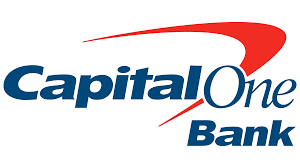Bank Statement Verification: Ensuring Accuracy and Preventing Fraud
In today’s fast-paced digital world, bank statements play a crucial role in financial transactions and legal proceedings. However, with the rise in fraudulent activities, it has become imperative to verify the authenticity of bank statements to ensure accuracy and prevent manipulation. In this article, we will explore the importance of verifying a bank statement, techniques and resources for verifying statement authenticity, steps to identify potential fraud or manipulation, and guidelines for using verified statements in legal contexts.
Bank Statement Verification: Importance of Verifying a Bank Statement
Bank statements are essential financial documents that provide an overview of an individual or business’s financial transactions over a specific period. They serve as vital evidence in various scenarios, such as loan applications, legal proceedings, and financial audits. Verifying a non-official banking record holds significant importance for several reasons:
- Ensuring Accuracy and Reliability: By verifying bank statements, individuals and businesses can ensure that the information presented is accurate and reliable. This is crucial for making informed financial decisions and maintaining transparency in financial matters.
- Preventing Fraud and Manipulation: Verifying bank statements helps uncover potential instances of fraud or manipulation. It enables individuals and organizations to identify discrepancies, unauthorized transactions, or altered records that may indicate fraudulent activities.
- Meeting Regulatory Requirements: In many cases, regulatory bodies, such as tax authorities or legal entities, require verified bank statements as evidence for compliance purposes. By verifying these statements, individuals and businesses can meet regulatory requirements and avoid penalties or legal complications.
- Enhancing Trust and Credibility: When presenting verified bank statements, individuals and businesses can enhance their credibility and build trust with financial institutions, investors, clients, and other stakeholders. This can lead to better opportunities, increased confidence, and improved financial relationships.
Techniques and Resources for Verifying Statement Authenticity
Verifying the authenticity of a bank statement involves employing various techniques and utilizing available resources. Here are some commonly used methods and resources for verifying statement authenticity:
- Contacting the Bank: The most straightforward approach is to contact the bank directly and request verification of the provided bank statement. Banks have dedicated departments or officers responsible for addressing such requests. They can verify the statement’s authenticity, validate the transactions, and provide additional details if necessary.
- Comparing with Online Banking: If the individual or business has access to online banking, they can cross-reference the transactions and details mentioned in the bank statement with the online account. This helps identify any inconsistencies or discrepancies that may indicate manipulation or fraud.
- Analyzing Transaction Patterns: By analyzing the transaction patterns, including dates, amounts, and payees, individuals and businesses can identify any unusual or suspicious activities. For example, multiple transactions of the same amount to unfamiliar entities might raise concerns.
- Using Financial Software or Tools: Several financial software applications and tools are available that can help verify bank statements. These tools can import and analyze bank statement data, comparing it with known transaction records and financial patterns to identify any discrepancies or anomalies.
- Seeking Professional Assistance: In complex cases or legal contexts, seeking professional assistance from forensic accountants or financial investigators can provide expert insights into verifying bank statements. These professionals have the knowledge, skills, and resources to conduct thorough investigations and identify potential fraud or manipulation.
Steps to Identify Potential Fraud or Manipulation
Identifying potential fraud or manipulation in a bank statement requires careful examination and attention to detail. Here are the steps to follow when analyzing a bank statement for potential discrepancies:
- Reviewing Transaction History: Begin by reviewing the entire transaction history provided in the bank statement. Pay close attention to any unfamiliar transactions, duplicate entries, or transactions with irregular amounts or dates.
- Verifying Account Balances: Check the account balances mentioned in the bank statement against the corresponding online account or previous statements. Ensure that the balances align and there are no significant discrepancies.
- Checking Statement Formatting: Examine the formatting and layout of the bank statement. Look for any signs of tampering, such as misaligned columns, inconsistent fonts, or irregular spacing. These may indicate manipulation attempts.
- Analyzing Transaction Details: Analyze the transaction details, including the date, time, payee, and amount. Identify any inconsistencies, such as transactions on weekends or public holidays when banks are typically closed.
- Investigating Unfamiliar Payees: If there are transactions with unfamiliar payees, conduct further research to determine their legitimacy. Search for the payees’ names, addresses, or contact information online to ensure they are genuine entities.
- Verifying Signatures and Stamps: If the bank statement includes signatures or stamps, verify their authenticity by comparing them to known signatures or contacting the bank for verification.
- Comparing with Supporting Documents: If supporting documents, such as receipts or invoices, are available, compare them with the corresponding transactions mentioned in the bank statement. Ensure that the details align and there are no discrepancies.
- Flagging Suspicious Activities: If any suspicious activities or discrepancies are identified during the verification process, flag them immediately. Document the findings and consider seeking professional advice or reporting the matter to the relevant authorities if necessary.
Guidelines for Using Verified Statements in Legal Contexts
When using verified bank statements in legal contexts, it is essential to follow certain guidelines to ensure their admissibility and credibility. Here are some guidelines to consider:
- Maintain Chain of Custody: Preserve the integrity of the verified bank statement by maintaining a proper chain of custody. Store the statement securely and ensure it cannot be tampered with or altered.
- Document Verification Process: Keep a detailed record of the verification process, including the techniques used, resources consulted, and findings. This documentation serves as evidence of due diligence and can support the statement’s credibility.
- Obtain Expert Opinion, if Necessary: In complex legal cases, consider obtaining an expert opinion from a forensic accountant or financial expert. Their professional assessment can provide additional credibility and strengthen the statement’s validity.
- Adhere to Legal Requirements: Familiarize yourself with the legal requirements and admissibility criteria for bank statements in your jurisdiction. Ensure that the verified statement meets all necessary criteria and is presented in the required format.
- Consider Affidavits or Notarization: Depending on the legal context, it may be beneficial to have the verified bank statement accompanied by an affidavit or notarized statement. These additional documents can enhance the statement’s credibility and legal standing.
- Consult Legal Professionals: When in doubt about the proper usage or presentation of a verified bank statement in a legal context, consult with legal professionals, such as attorneys or solicitors. They can provide guidance based on their expertise and knowledge of the applicable laws.
Frequently Asked Questions (FAQs)
Q1: Why is it important to verify a bank statement before relying on it for financial decisions or legal proceedings? It is crucial to verify a bank statement to ensure its accuracy, reliability, and authenticity. Without verification, there is a risk of relying on false or manipulated information, which can lead to erroneous financial decisions or legal complications.
Q2: Can I verify a bank statement on my own, or do I need professional assistance? Verifying a bank statement can be done individually in many cases, especially for routine transactions. However, in complex cases or legal contexts, seeking professional assistance from forensic accountants or financial investigators may be beneficial.
Q3: What are some red flags to look for when analyzing a bank statement for potential fraud? Some red flags include unfamiliar transactions or payees, irregular amounts or dates, duplicate entries, inconsistent formatting, and discrepancies between the bank statement and supporting documents.
Q4: How can I ensure the admissibility of a verified bank statement in a legal proceeding? To ensure admissibility, maintain a proper chain of custody, document the verification process, adhere to legal requirements, consider expert opinions or notarization, and consult with legal professionals familiar with the specific legal context.
Q5: Can online banking be used as a resource for verifying bank statements? Yes, online banking can be a valuable resource for verifying bank statements. By comparing the transactions and details mentioned in the bank statement with the online account, individuals can identify inconsistencies or discrepancies.
Q6: Are there specific software or tools available for verifying bank statements? Yes, several financial software applications and tools are available that can assist in verifying bank statements. These tools can import and analyze bank statement data, comparing it with known transaction records and financial patterns.
Conclusion
Verifying a bank statement is crucial for ensuring accuracy, preventing fraud, and maintaining transparency in financial matters. By utilizing techniques such as contacting the bank, comparing with online banking, and analyzing transaction patterns, individuals and businesses can verify the authenticity of bank statements. Identifying potential fraud or manipulation requires careful examination and attention to detail. Following guidelines for using verified statements in legal contexts ensures their admissibility and credibility. By prioritizing bank statement verification, individuals and businesses can make informed financial decisions and safeguard against fraudulent activities.







